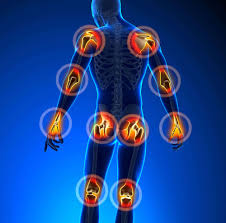Living with joint pain can be an arduous journey, but understanding how to achieve stability in the midst of discomfort can be transformative. In this blog post, we’ll explore the complexities of joint pain and unveil strategies to promote stability, allowing individuals to reclaim control over their mobility and overall well-being.
- The Dynamics of Joint Pain:
Joint pain is a multifaceted experience, influenced by factors ranging from aging and inflammation to injury and underlying health conditions. Recognizing the unique dynamics of joint pain is the first step towards stability. - Strengthening the Foundation:
Building stability starts with strengthening the foundation. Targeted exercises that focus on the muscles surrounding the affected joint can provide essential support, enhancing stability and minimizing stress on the joints. - Balanced Nutrition for Joint Health:
Nutrition plays a crucial role in joint stability. Incorporating anti-inflammatory foods, omega-3 fatty acids, and joint-friendly nutrients can contribute to overall joint health, reducing inflammation and supporting the body’s natural healing processes. - Mindful Movement Practices:
Mind-body practices, such as yoga and tai chi, emphasize gentle, controlled movements that enhance flexibility and balance. These practices not only provide physical benefits but also contribute to mental well-being, reducing stress that can exacerbate joint pain. - Weight Management Strategies:
Maintaining a healthy weight is paramount for joint stability. Excess weight places additional strain on joints, particularly in weight-bearing areas like the knees and hips. A balanced diet and regular exercise contribute to weight management and alleviate joint stress. - Joint-Friendly Lifestyle Adjustments:
Simple lifestyle adjustments can make a significant difference. Ergonomic changes at home or work, proper posture, and joint protection techniques empower individuals to navigate daily activities with less strain on affected joints. - Collaborative Care with Healthcare Professionals:
Seeking guidance from healthcare professionals, including orthopedic specialists and physical therapists, is integral to joint pain stability. These experts can provide tailored advice, therapeutic interventions, and guidance on effective pain management strategies. - Innovative Treatments and Therapies:
Advancements in medical science offer a range of innovative treatments and therapies for joint pain, including regenerative medicine, minimally invasive procedures, and targeted medications. Exploring these options under the guidance of healthcare professionals can open new avenues for stability. - The Importance of Rest and Recovery:
Amidst the quest for stability, rest and recovery should not be overlooked. Adequate sleep, proper rest intervals between activities, and mindful relaxation techniques contribute to joint health by allowing the body to repair and rejuvenate. - Empowering Through Knowledge:
Education is a powerful tool in the journey towards joint stability. Understanding the specific conditions causing joint pain, learning about treatment options, and staying informed about preventive measures empower individuals to actively participate in their own well-being.
In conclusion, achieving stability amidst joint pain is a comprehensive process that involves a combination of physical, nutritional, and lifestyle strategies. By adopting a holistic approach and incorporating these elements into daily life, individuals can navigate the challenges of joint pain with resilience, ultimately reclaiming a sense of stability and improved quality of life.

